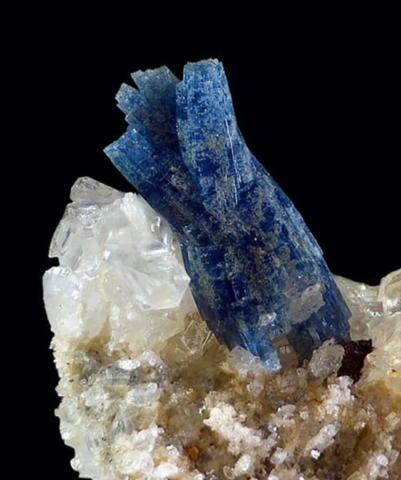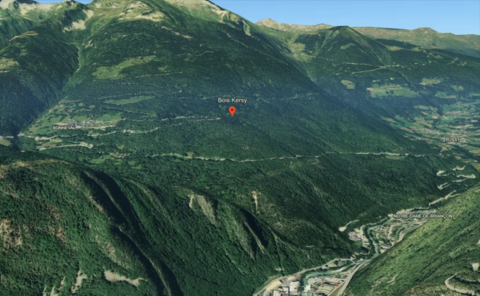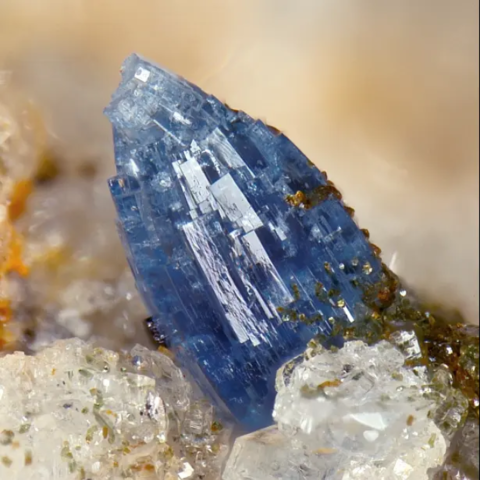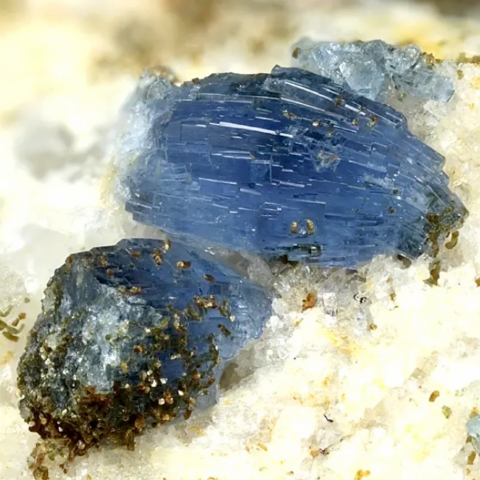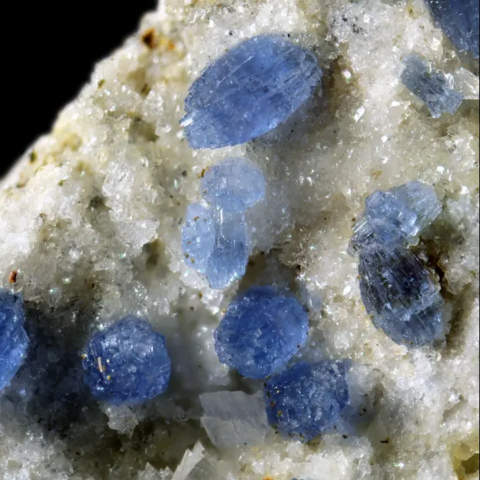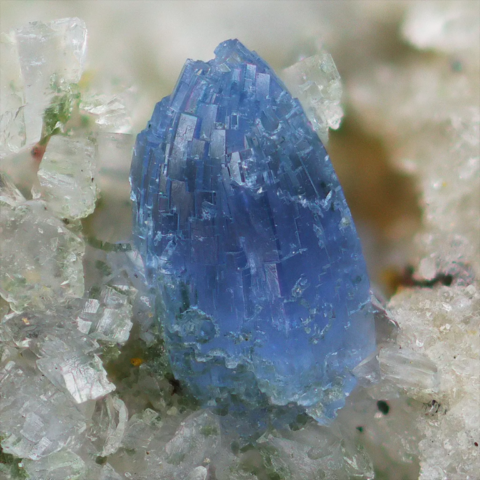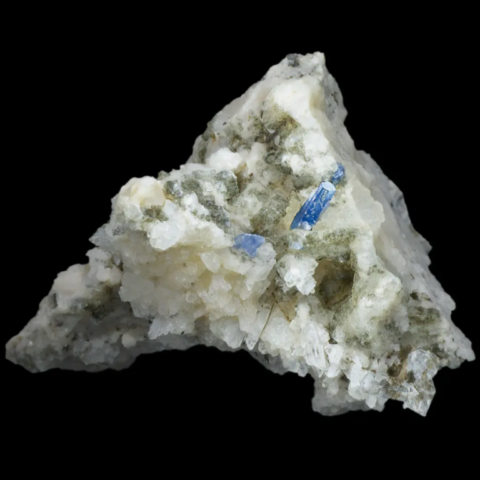Bazzite from Kersy Forest, Massif de la Lauzière, France
The Lauzière Massif, located in the French Alps, is renowned for its lithological diversity and its wealth of rare minerals, evidence of the complex geological processes that have shaped the region. Among the minerals of interest, bazzite stands out for its unique composition and rarity. This beryllium silicate, often identifiable by its intense blue color, has a hexagonal crystalline structure and contains rare earth elements, including scandium. Its study offers a valuable opportunity to better understand the interactions between metamorphism, hydrothermalism, and rare element geochemistry. This article focuses on the bazzites of Kersy Forest, an emblematic locality of the Lauzière Massif, by examining their geological context, their mineralogical and chemical properties, their genesis, and their scientific and economic implications.
Photo : Bazzite from Kersy Forest, Bonneval, Massif de la Lauzière, Savoie, France © Pascale and Daniel Journet
Geological context of Kersy Forest
The leptynites, which constitute the bedrock of these fissures, come from the metamorphic transformation of ancient volcano-sedimentary rocks, probably from the Lower Paleozoic. These formations have undergone phases of intense metamorphism associated with the complex history of the Alpine chain. During the Alpine episode, these rocks were deeply buried, deformed and finally exhumed, creating favorable conditions for the opening of fractures. These cracks, a few centimeters to several meters long, constitute environments conducive to the circulation of hydrothermal fluids.
Hydrothermal fluids, rich in dissolved elements, play a determining role in the formation of bazzites. In this specific case, they remobilized chemical elements such as beryllium and scandium, essential for the crystallization of this rare silicate. The source of these elements remains debated, but it could come from ancient pegmatite or aplite veins metamorphosed within the leptynite, and then leached by hydrothermal circulations.
The fractures, dated between 11 and 5 million years old, testify to late tectonic activity linked to the evolution of the Alpine chain. The nearby Eau Rousse Valley is a major axis of fracturing and faulting, which would have favored the rise of hot fluids and their interaction with the surrounding rocks. These conditions allowed the formation of remarkable bazzite crystals, both in terms of their size and their purity. This exceptional geological context makes the Bonneval deposit a world reference for the study of rare beryllium silicates and mineralizations associated with Alpine clefts.
Bazzite: morphology, composition, properties
The bazzite crystals discovered in the Kersy Forest have a particularly aesthetic and well-developed morphology. They appear as hexagonal prisms, often elongated and sometimes slightly squat, with sharp and smooth terminations. Their size generally varies from a few millimeters to more than a centimeter, and they are distinguished by an intense azure blue color, characteristic of this mineral. The crystals exhibit intense pleochroism.
The bazzites of the Kersy Forest adopt a typical but slightly variable chemical composition depending on their local geological environment. Their general formula, Be3Sc2Si6O18, reflects their belonging to the beryl group, with scandium playing a central role in partially replacing aluminum in the crystal structure. This substitution, essential to define bazzite, is responsible for its characteristic blue hue, accentuated by the presence of minor chromophoric elements. Indeed, traces of iron (Fe2+ or Fe3+) can be detected, subtly influencing the nuances of the coloring. Furthermore, the hexagonal crystalline structure of this cyclosilicate confers great stability to the scandium and beryllium ions, despite local variations in silicon or impurities such as magnesium, sodium or lithium, observed in certain samples.
Scientific and economic importance
The study of the Kersy Forest bazzites is of significant scientific importance, as it provides information on the mechanisms of concentration of rare elements in metamorphic and hydrothermal environments. Rare earths, essential to many modern technologies, such as batteries, electronic devices and renewable energies, are at the heart of current economic and geopolitical concerns. Although bazzite itself does not represent an exploitable source of rare earths due to its rarity, it is a promising indicator for the exploration of potential deposits.
In addition, understanding the conditions of formation of bazzites contributes to the modeling of the geological processes responsible for the concentration of strategic resources in the Earth’s crust, paving the way for more targeted approaches in mineral exploration.
Photo : Bazzite from Bois de Kersy, Bonneval, Massif de la Lauzière, Savoie, France © Orso Martinelli
Conclusion
References :
De Ascenção Guedes, R., Devouard, B. (2011) La bazzite du Bois Kersy, massif de La Lauzière, Bonneval, Tarentaise, Savoie. Le Règne Minéral: 101: 5-16.
Hudson Institute of Mineralogy. (2025). Mindat.org : The mineral database and mineralogy reference.

